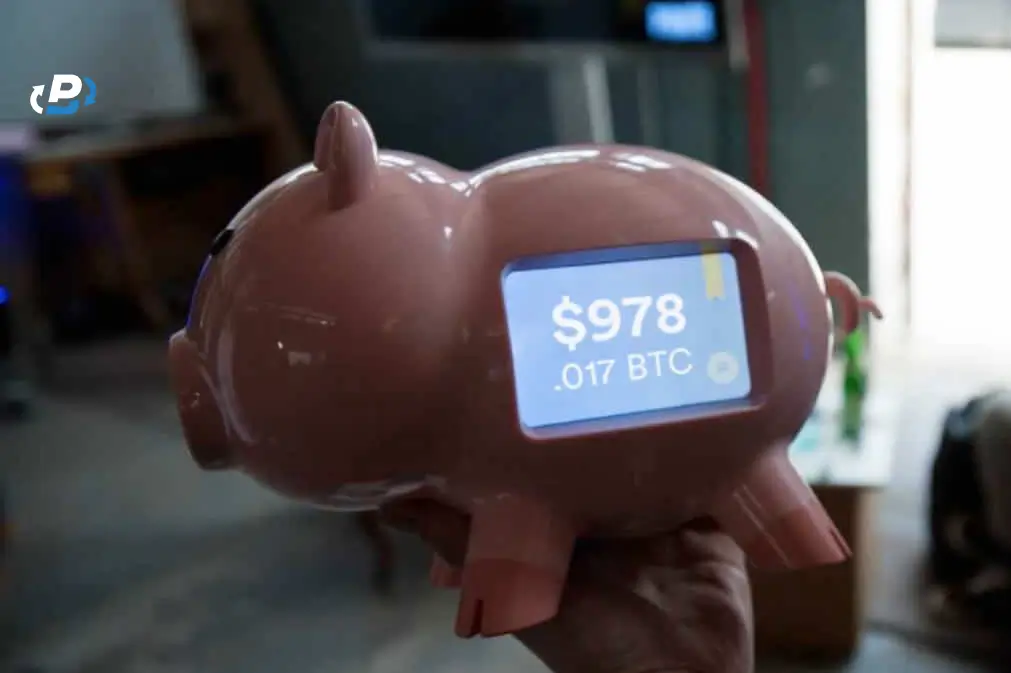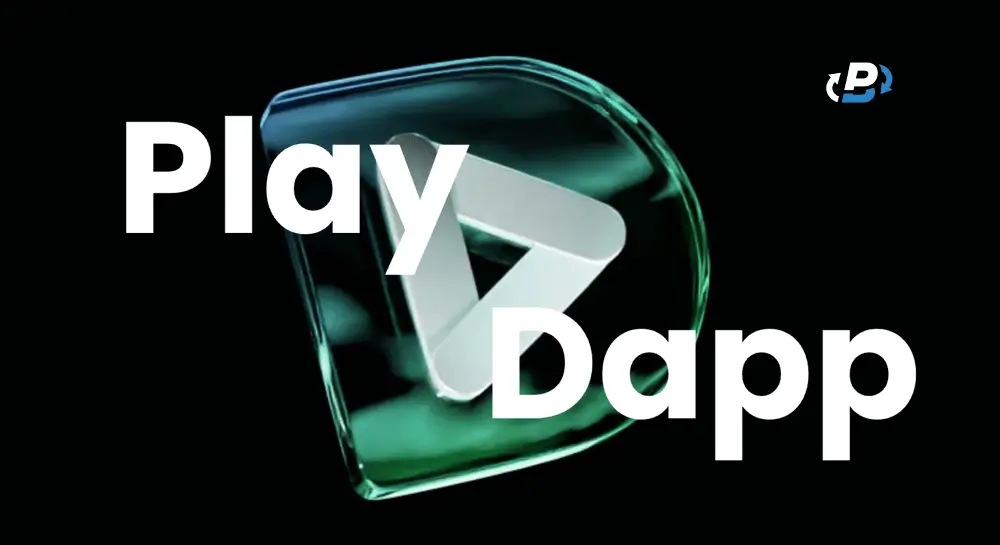If you are in this article, you have probably encountered a crypto scam project. Unfortunately, although the growth of cryptocurrencies and blockchain is exciting, it also brings many risks. This PlasBit research will examine how a crypto scam project can be identified. We are absolutely convinced that the best way to combat scam attempts is through user education, and we do our best to inform objectively and accurately. So, how to spot a scam crypto project? Crypto scam projects can be identified by analyzing common red flags in crypto, such as an anonymous team, promises of high returns on investment, pressure to invest "early", no clear use case, and unsustainable long-term economics.
The typical red flags in crypto are:
- Anonymous Team: If the project team members are anonymous or their identities cannot be verified, it's a major red flag. Legitimate projects usually have transparent teams with verifiable credentials.
- Unrealistic Promises: Be wary of projects that promise guaranteed high returns or claim to be "the next big thing" without solid evidence or a feasible roadmap.
- Lack of Whitepaper or Roadmap: A detailed whitepaper outlining the project's technology, goals, and roadmap is essential. If a project lacks a whitepaper or has a vague roadmap, it could be a scam.
- Copycat Projects: Some scams simply copy the branding, website, or Whitepaper of legitimate projects. Always verify the authenticity of a project and look for signs of plagiarism.
- No Clear Use Case: A legitimate project should have a clear use case and solve a real-world problem. It might be a scam if the project's purpose is unclear or unnecessary.
- Unsolicited Offers: Be cautious of unsolicited offers, especially those received via email, social media, or messaging apps. Scammers often use these channels to promote fraudulent projects.
- Lack of Community Engagement: Legitimate projects usually have active communities on social media platforms and forums like Reddit or Bitcointalk. A lack of community engagement could indicate a scam.
- Unrealistic Token Distribution: Check the token distribution model. If a large portion of tokens is allocated to the team or early investors without apparent justification, it could be a sign of a scam.
- Fake Partnerships or Endorsements: Some scams claim partnerships or endorsements from well-known companies or individuals to gain credibility. Verify these partnerships independently to ensure they're legitimate.
- Pressure to Invest Quickly: Scammers often create a sense of urgency by pressuring investors to buy tokens quickly before they miss out on a supposed opportunity. Take your time to research thoroughly before investing in cryptocurrencies.
Even if the project does not have these specific red flags in crypto, it is not necessarily safe. Many more factors must be taken into account simultaneously, and only with a holistic view of the project can it be clearly understood whether it is a scam. In this research, we will focus on the case study of "Project Scam", a platform that improperly makes users believe that they invested in blockchain assets, which can be sold and liquidated, promising great returns on investment. Although it promotes itself as a Web3 project, it is a simple Web2 platform based on a Ponzi-like economic mechanism. Let us explore this in more detail.
Case Study: "Project Scam" Case Study
In this case study, we will analyze a project that promises high returns on investment and uses the word "token" improperly. This makes investors mistakenly believe that they have the assets registered on the blockchain. Moreover, as we will explain, returning the investment is almost impossible.
Step 1: A new company is registered with a capital of just $1,000.
Although this project does not start out as a scam, the economic incentive mechanism and manipulative communication make it a clear example of a possible crypto scam project. The first red flag was the registration of a simplified limited liability company with a minimum capital of $1,000. Although registering as 'simplified' with minimum capital is common for many companies, this is a big red flag if it is a platform that promises high returns and global growth targets. How can a company with only $1,000 in capital manage to expand globally and, at the same time, offer high returns on investment to users?
Step 2: The online platform and social media is created
The project creates the online site, social media, and infrastructure to support an ambitious project quite thoroughly. The project seems credible and legitimate, riding the trend of collectible tokens on a blockchain. But right here is the first major red flag: "Project Scam" presents its collectible cards as "tokens," indirectly suggesting that they are assets mined on blockchain. In contrast, there is no integration with smart contracts, and the assets exist only in the closed ecosystem of their platform.
Step 3: Misleading promotion promising high returns
Once the manipulative and misleading infrastructure is in place, the promotion begins. Like any suspect project, "Project Scam" promises high returns on investment. Promising high returns is improper and wrong: no investment is safe, least of all on an emerging platform. Through low-quality Youtubers, who lend themselves to scam promotions, they spread the word that the project offers high-profit potential to investors. However, as we all know, aspiring to 10% is already a great result for most investors, and promising much higher returns is, at the very least, implausible and misleading, not to mention fraudulent.
Step 4: Users invest in the platform
Attracted by the large manipulative promotion, users begin to register on the platform and deposit their money. With them, they can buy trading cards, which users are led to believe are stored on the blockchain when, in fact, they are only internal to the platform. Users deposit more and more money, and on paper, it appears that they are actually earning money, according to the platform's analytics. But there is a deception.
Step 5: Users cannot withdraw assets from the platform
Although, theoretically, users are made to believe that they are earning real money, this is, in fact, a clear crypto Ponzi scheme. In fact, through the purchase and sale of these trading cards, no added value is created that allows for the long-term viability of the business. On the contrary, users' funds are locked up in the closed ecosystem of the platform, and only through sales to other new users can they get back their investment. Therein lies the deception: there will never be new users buying another user's trading cards because the platform has no interest in stimulating the secondary market. Rather than having users buy and sell cards they already own, the platform creates new trading cards to sell to new users. In this way, users already on the platform who want to sell their trading cards will never find a buyer for them because any new demand from external users is met by the new supply of cards offered by the platform.
Recap of the Scam
So, in conclusion, what "Project Scam" promises and does is nothing more than a crypto Ponzi scheme. The platform continues to make a profit from selling trading cards to new users, but existing users can never sell their cards to new users because there is no demand, and if there is, it is met by the platform issuing new trading cards. So, 'the other promised profits' are there, but only for "Project Scam". Users, on the other hand, will see their assets locked indefinitely on the platform without ever being able to find buyers for their trading cards. On "Project Scam", you are not trading cryptocurrencies assets, but you're just involved in a Ponzi scam.
How To Spot A Scam Crypto Project? Suggestions and Tips
Now that cryptocurrencies are becoming a mass phenomenon and more and more traditional financial institutions are entering this world, the opportunities and risks increase exponentially.
More and more scam modes are emerging to circumvent and scam unsuspecting and vigilant users. Scams come in many different forms, including pump-and-dump schemes, pig butchering scams, address poisoning attacks, and more.
In our case study, we have highlighted the criticalities of "Project Scam", which can be described as a Ponzi scam project, which also misuses the word 'token' to make users believe that assets are stored on the blockchain, when in fact it is a 'classic' and not very attractive Web2 platform.
Unfortunately, however, it is not always easy to tell whether a project is a scam or not, because various parameters have to be analysed at the same time, and a good deal of research and study is needed to get a holistic and objective view. So how to spot a scam crypto project? Let us look in detail at what factors need to be studied and analyzed.
Whitepaper Analysis
The Whitepaper is the first document to be analyzed because you can find all the features and objectives of the project on it. It is a technical and theoretically very detailed document drafted by the project team that gives a clear overview of all the factors that make up the project. It may include diagrams, calculations, schematics, and visual elements to aid reading and understanding. It is essential to consciously evaluate a project and to get a good understanding of how the project can develop and grow in the long term. From it, you can get the outlook and potential of the project and understand whether it has been structured by a solid and experienced team or whether it is the product of a group of scammers, as in the case of "Project Scam" just analyzed.
How is a project whitepaper generally structured?
- Introduction and Executive Summary: Begin by reviewing the Whitepaper's introduction and executive summary. These sections should provide a concise overview of the project's objectives, problem statement, and proposed solution. Pay attention to whether the project addresses a genuine need or market demand.
- Technology and Innovation: Evaluate the technical aspects of the project, including its underlying blockchain technology, consensus mechanism, and any innovative features or improvements it offers compared to existing solutions. Look for technical details that demonstrate a thorough understanding of the technology and its potential applications.
- Use Cases and Market Potential: Assess the project's use cases and target market. Does the project address a specific industry or sector? Is there a clear value proposition for potential users or customers? Consider the market potential and scalability of the project's solution.
- Tokenomics and Token Utility: Examine the tokenomics model proposed by the project, including details on token distribution, supply dynamics, and utility within the ecosystem. Evaluate whether the project's token has a clear and essential function, such as facilitating transactions, governance, or accessing platform features.
- Roadmap and Milestones: Review the project's roadmap and milestones for the planned development and rollout of key features and functionalities. Assess the feasibility and realism of the project's timeline, considering the complexity of the technology and potential regulatory challenges.
- Team and Advisory Board: Investigate the project's team members and advisory board. Look for individuals with relevant experience, expertise, and credibility in the cryptocurrency and blockchain space. Verify their identities and past accomplishments to ensure transparency and accountability.
- Partnerships and Collaborations: Consider any strategic partnerships or collaborations mentioned in the Whitepaper. Partnerships with established companies, organizations, or institutions can enhance the project's credibility and increase its chances of success. Verify the legitimacy of these partnerships through independent research.
- Community Engagement and Support: Evaluate the project's community engagement and support through social media channels, forums, and community events. Active and engaged communities indicate genuine interest and support for the project, fostering a network effect that can drive adoption and growth.
- Regulatory Compliance: Ensure that the project complies with relevant regulatory requirements and guidelines. Projects that operate within regulatory frameworks are more likely to gain legitimacy and attract institutional investors and users.
- Risk Factors and Disclaimers: Finally, review any risk factors and disclaimers mentioned in the Whitepaper. Consider the potential challenges, uncertainties, and risks associated with the project, such as regulatory changes, technical vulnerabilities, or market volatility.

Researching the Development Team
In the Whitepaper you can get a general idea of the project, the objectives, and the team behind it. But this is not enough to get a clear overview of the team, because in the Whitepaper everything is reported subjectively by the team, and you cannot get impartial information about it. Therefore, continue your research on the team using other sources.
- LinkedIn and Social Media Presence: Verify the authenticity of team members' profiles by cross-referencing information on professional networking platforms like LinkedIn. Pay attention to the consistency of their work history and endorsements from reputable sources. Additionally, explore their activity on social media platforms to gauge their engagement with the crypto community.
- Previous Projects and Contributions: Investigate whether team members have been involved in previous cryptocurrency projects or blockchain initiatives. Assess their contributions, achievements, and any notable successes or failures in past endeavors. Look for evidence of relevant expertise and domain knowledge.
- GitHub Repositories and Code Contributions: Review the project's GitHub repositories and codebase to assess the quality of the development work and the level of activity from the team. Evaluate the frequency of code commits, the responsiveness to issues and pull requests, and the overall transparency of the development process.
- Public Speaking Engagements and Conference Attendance: Consider whether team members have participated in public speaking engagements, conferences, or industry events related to blockchain and cryptocurrencies. Attendance at reputable events can enhance the team's credibility and visibility within the community.
- Media Coverage and Interviews: Search for media coverage, interviews, or articles featuring the project's team members. Positive mentions in reputable publications or interviews with credible journalists can provide additional validation of the team's credibility and expertise.
- Legal and Regulatory Compliance: Ensure that the project's team members comply with legal and regulatory requirements in their respective jurisdictions. Verify their identities and professional credentials to mitigate the risk of fraudulent activities or legal issues.
- Transparency and Accessibility: Evaluate the level of transparency and accessibility demonstrated by the project's team members. Legitimate projects prioritize open communication, responsiveness to inquiries, and regular updates on development progress and milestones.
As you can imagine, the team is probably the most important factor to analyze in order to understand the long-term potential of the project. The team is the beating heart of the project and is responsible for its growth and success. An inexperienced and little-known team has less chance of achieving good results than a competent and established team.
Business Model Analysis
Another very important factor to be analyzed is the business model. Indeed, even the best team in the world cannot guarantee long-term success if the business model is unsustainable. This is precisely the main problem we found in the case study concerning "Project Scam". In that case, the business model was not sustainable in the long term and penalized the investing users, favoring only the team and leading the project economy back to a fraudulent crypto Ponzi scheme. Let us take a closer look at what factors determine a successful business model.
- Value Proposition: Start by understanding whether the project actually creates real value in the world. Does it solve a concrete problem? Does it create additional value in the world? If the answer is no, as in the case of "Project Scam", then the project does not have good future prospects. No business is sustainable if it does not create real value in the world and does not solve a problem. If the potential value generated is within a closed system, as in "Project Scam", then the value is 'artificial', and no one will ever benefit from it, either economically or in terms of value.
- Revenue Streams: Where does the revenue stream in the project come from? Is there profitability for both the users and the team? In the case of "Project Scam", the money flow only comes from new investors entering the project. Consequently, the only income for the project comes from new users, and only the team benefits, like a crypto Ponzi scheme. In fact, without value generated in the real world, there can be no inflow of money to justify the investment. If you don't create value, you don't create revenue streams, except by cheating users.
- Market Analysis: What are the project's competitors? Avoid becoming a fan-boy who cannot analyze the situation objectively. Although a project may particularly excite you, consider that there may be many more established and promising competitors. Research with dedication possible projects that can solve the same problems and have better fundamentals with more long-term potential. Often, the mistake crypto holders make is to 'fall in love' with a project without taking into account that there are potentially many better projects dealing with the same issue.
- Business Strategy: If the business strategy is mainly focused on promotion and marketing and not on providing real added value, then this is a serious red flag. The best projects and platforms do not need promotion because the product 'sells itself'. If the products offered are good and solve a real problem, then there is no need to focus too much on marketing because users will spread the word and promote the project for you. This is a point that, at PlasBit, we are very keen to emphasize because we are particularly against manipulative marketing strategies, such as referrals or cashback. On our platform, in fact, we do not need to do massive promotion; our services are created for high-net individuals who come to our platform organically, without the need for finished promoters and influencers or manipulative tactics.
- Scalability and Growth Potential: Once you have analyzed the technical fundamentals of the project, you can answer the following question: Can the project scale and grow over the long term? In the case study analyzed of "Project Scam", for example, the answer is no: The project, like a classic crypto Ponzi scheme, is not scalable because the profits are based only on the inflow of funds from new, unaware users who are also scammed.
Seeking Feedback and Reviews
Ultimately, the best way to check a platform's credibility is to see what other users who have already used it think of it. Reviews are becoming increasingly important because they are the only truly "democratic" way to verify a project's trustworthiness.
- Community Forums and Social Media: Start by looking for user reviews on social platforms and forums such as Reddit, Quora, Twitter, and the like. On these platforms, users are free to give their real opinions about the platform, and you can prevent fraud and scams by carefully checking what other users who have already used the platform think about it.
- Independent Review Platforms: There are many independent review platforms available where users can give their feedback, such as TrustPilot. On these platforms users freely evaluate the platform, and if it is suspicious of scams, you can easily tell based on other users' feedback.
- Professional Analysis and Research Reports: Some crypto analysts and researchers often publish their analyses regarding new and established projects. Their analyses are often very thorough and in-depth, researching all the key parameters to evaluate in order to understand whether a project has good potential or not. If you think you are still unable to evaluate a project objectively and thoroughly, look for reviews by reputable and experienced people. However, it is also important to consider that their opinions may be subject to personal views and cognitive bias, so if you rely on other people's analyses, apply sound critical thinking.
- Due Diligence and Verification: As just mentioned, even if you rely on other people's analysis, it is not enough. DYOR (Do your own research) and independently verify the reliability of the information. The ultimate responsibility for your investments is always in your hands, so make informed and conscious choices. The first rule in investing for Warren Buffett is not to lose money.
How to Spot a Scam Crypto Project? A Last Overview
As we pointed out from the "Project Scam" case study, many projects are not sustainable in the long run, do not create real value, and promise high returns on investment. These are clear red flags in crypto that the project is potentially a scam.
So, how to spot a scam crypto project? How to protect yourself from being a victim? If you are an investor, never make impulsive choices based on hype and FOMO. Rational analysis is the basis of any successful investment. You will have to try your hand at technical and fundamental analysis to be able to get a holistic and objective view of the project, and only in this way can you minimize the risks and maximize the returns on your investments.
Never invest in a project that has several red flags in crypto, and take the time to analyze it before making ill-informed choices. At PlasBit, we are very concerned about the rise of scams and fraud in the crypto world, and we will always be at the forefront of informing and educating users in order to help them make informed and conscious choices.
Never rely solely on the opinions of others, and DYOR.
Only by performing a strategic analysis, as shown in this article, will you be able to juggle the world of cryptocurrency, which has a lot of potential but also numerous inherent risks.

 EN
EN









